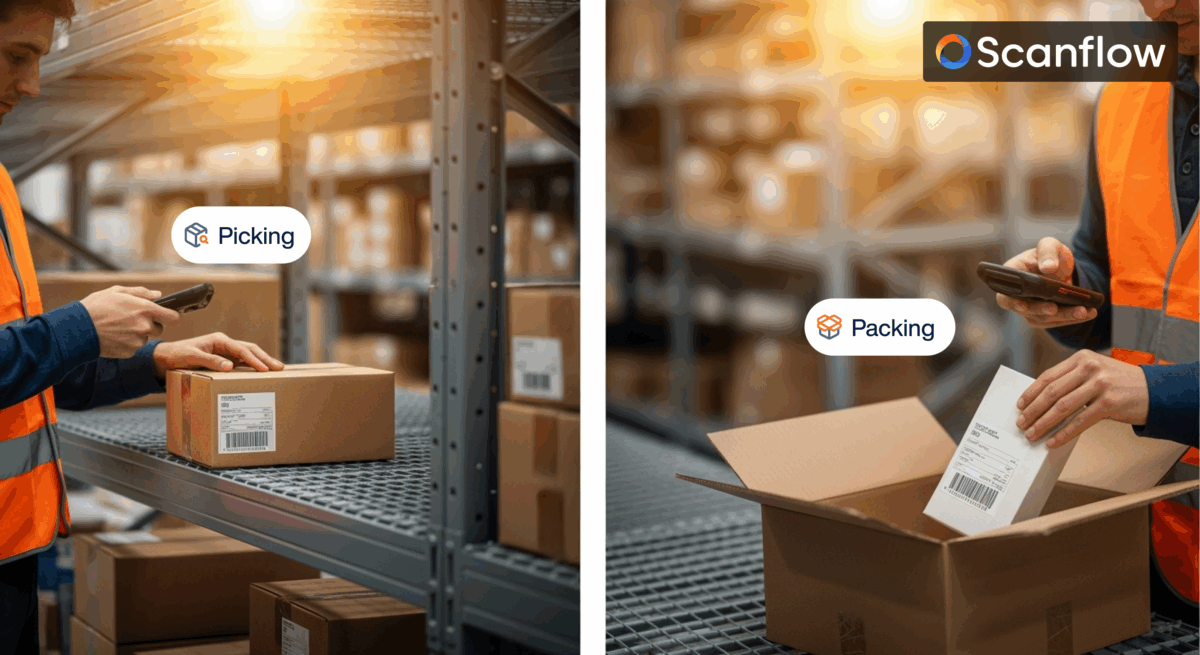Understanding the Role of Serial Number Scanning in 3PL Operations
In today’s hyperconnected logistics world, traceability and visibility are the backbone of efficient 3PL operations. Every product, from an automobile tire to a retail shipment, carries a unique serial identity. Managing this massive flow of serialized items manually can lead to errors, delays, and compliance risks.
That’s where mobile serial number scanning comes into play offering real-time, high-accuracy asset identification at every node of the supply chain. With solutions like Scanflow’s serial number scanner, 3PL providers can bridge the visibility gap and achieve seamless traceability from pickup to delivery.
What Is a Serial Number Scanner and Why It Matters
A serial number scanner is a digital solution that reads and verifies unique identifiers (like alphanumeric serials) directly from products or labels. Unlike traditional barcode systems that rely on fixed-position scanners, mobile serial number scanners such as those offered by Scanflow enable scanning via smartphones or rugged handheld devices.
This flexibility empowers warehouse workers and delivery teams to instantly capture serial data anywhere, ensuring that every asset is tracked precisely across multiple facilities or partners.
The Shift Toward Mobile-Based Scanning Solutions
Legacy warehouse tracking systems often depend on bulky, fixed-position scanners or manual log entries. However, today’s distributed 3PL ecosystem demands mobility. Mobile-based serial number scanning enables on-the-go visibility, ensuring data is captured at the source not later from a clipboard.
By leveraging Scanflow’s mobile-first design, 3PL providers gain agility and accuracy, ensuring traceability extends to remote yards, delivery trucks, and client warehouses.
Traceability Challenges Faced by 3PL Providers
1. Manual Data Capture and Its Limitations
Many 3PLs still depend on manual data entry or basic barcode systems. This approach often leads to duplicate records, missing items, or inaccurate asset logs. Errors at even one node can cascade across the entire logistics chain.
2. Inconsistent Asset Identification and Visibility
Without a unified system for serial number capture, it becomes difficult to ensure consistency across various clients and partners. Mobile serial number scanners solve this by offering a centralized data capture layer, ensuring every product is uniquely tracked from source to destination.
How Mobile Serial Number Scanning Works
1. Real-Time Scanning on the Warehouse Floor
With a mobile device, operators can instantly scan serial numbers during receiving, picking, packing, or dispatching. Each scan automatically links the product to its digital record, maintaining traceability throughout its journey.
2. Data Synchronization Across Supply Chain Platforms
Scanflow enables real-time integration with 3PL management systems, ERP, and WMS platforms. This ensures data flows seamlessly, offering complete visibility for both clients and operators.
Key Benefits of Using Scanflow’s Mobile Serial Number Scanner
1. Accurate Asset Identification and Reduced Human Error
Scanflow’s precision scanning technology drastically reduces manual entry mistakes. Every asset is validated instantly, minimizing costly errors during shipping or audits.
2. Improved Inventory Traceability and Transparency
3PLs gain end-to-end visibility, from inbound shipments to final delivery. Real-time data improves response times and enables proactive issue resolution.
Seamless Integration With 3PL and ERP Systems
Scanflow integrates easily with existing enterprise systems, ensuring that serial data flows into dashboards and analytics tools without manual intervention.
Enhanced Speed and Scalability for 3PL Networks
Whether managing one warehouse or fifty, Scanflow scales effortlessly empowering 3PL providers to onboard new clients and workflows faster than ever.
Use Case: Tire Sidewall Serial Number Capture
1. Challenges of Tracking Tire Movement Across 3PL Channels
For automotive and tire manufacturers, each tire has a unique sidewall serial number. Traditional tracking methods often fail to capture these identifiers efficiently, especially when the tires are stacked or stored in large volumes.
2. How Scanflow’s Tire Sidewall Scanner Simplifies Serialization
Scanflow’s tire sidewall scanner enables technicians and warehouse teams to capture these serials instantly, even in low-light or challenging warehouse environments. This innovation ensures complete visibility from manufacturing to last-mile distribution improving compliance, recall management, and overall traceability.
Comparative Analysis: Traditional Tracking vs. Mobile Serial Number Scanning
| Aspect | Traditional Tracking | Mobile Serial Number Scanning (Scanflow) |
|---|---|---|
| Data Entry | Manual or partial barcode scans | Fully automated mobile capture |
| Traceability | Limited across partners | End-to-end visibility across all nodes |
| Accuracy | Prone to human error | 99.9% accuracy with instant validation |
| Scalability | Difficult to expand | Easily scalable for multiple 3PL sites |
| Integration | Siloed systems | Integrates with ERP, WMS, and TMS platforms |
Impact of Serial Number Scanners Across Industries
Automotive and Tire Logistics
Automotive suppliers and tire manufacturers rely on serial number scanners to track high-value assets, prevent counterfeiting, and manage recalls efficiently.
Retail Distribution Networks
For retail 3PLs, mobile serial scanning ensures product-level traceability, reducing lost shipments and enabling faster returns processing.
Manufacturing and Reverse Logistics
Manufacturers use Scanflow’s solution to track serialized parts during production and recovery phases, closing the loop on asset management.
3PL Industry Benefits of Mobile Serial Number Scanning
1. Strengthened Compliance and Audit Readiness
By maintaining an accurate digital log of serialized assets, 3PL providers can instantly produce audit trails to meet client and regulatory standards.
2. Improved Customer Trust Through Transparent Data
Clients value transparency. Scanflow empowers 3PLs to share real-time tracking data, strengthening customer confidence and relationships.
3. Enabling Digital Transformation for 3PL Providers
Beyond traceability, mobile serial number scanning drives broader digital transformation, supporting data-driven decisions, predictive insights, and operational agility.
Why Scanflow Stands Out in the 3PL Ecosystem
1. Purpose-Built for Mobile Environments
Scanflow is designed with mobile-first logistics in mind easy to deploy, compatible with existing devices, and usable even in field conditions.
2. Scalable, Configurable, and Future-Ready
Whether scanning tires, pallets, or product batches, Scanflow adapts to every 3PL use case, ensuring scalability and customization for growth.
Conclusion: Traceability as the Future of 3PL Efficiency
The future of logistics belongs to data-driven, transparent, and agile operations. With Scanflow’s mobile serial number scanner, 3PL providers can unlock unparalleled traceability, accuracy, and client trust turning complex multi-asset networks into efficiently orchestrated ecosystems.
From tire serialization to retail fulfillment, the ability to identify and trace every item in motion isn’t just a feature it’s a competitive edge.
👉 Learn more about Scanflow’s Mobile Serial Number Scanning Solutions



